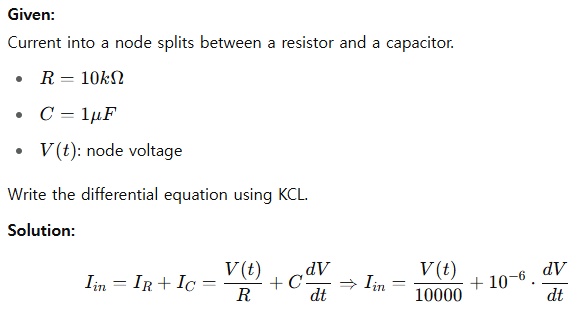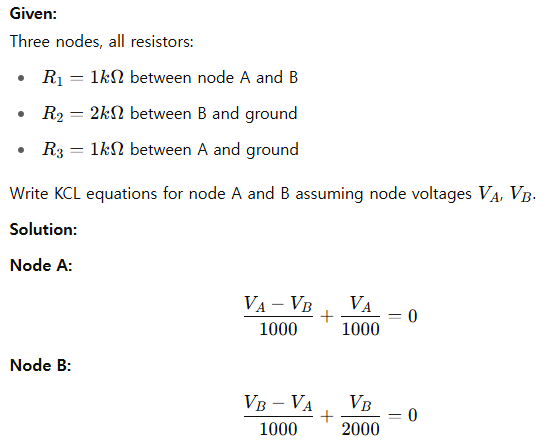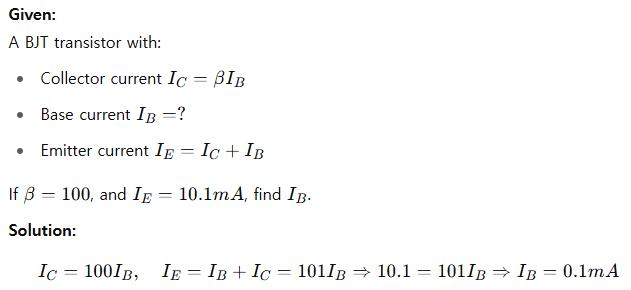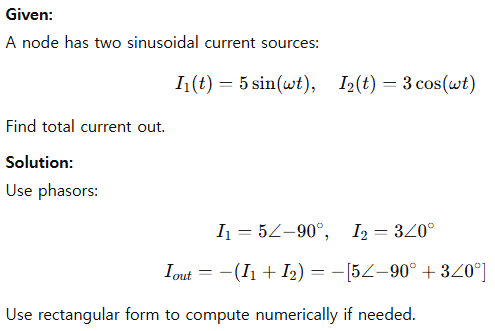10 KCL Practice Problems from Beginner to Expert Level
Kirchhoff’s Current Law (KCL) is a fundamental rule in circuit analysis that states: the total current entering a node is equal to the total current leaving the node. To master this concept, practice is essential. In this post, you’ll find 10 carefully crafted KCL problems, ranging from beginner to advanced levels. Each question includes a detailed solution to help solidify your understanding.
Problem 1: Basic Current Balance (Beginner)

Problem 2: One Unknown Incoming Current (Beginner)

Problem 3: Sign Conventions (Beginner)

Problem 4: Voltage-Based Currents (Intermediate)

Problem 5: Capacitive Node (Time Domain) (Intermediate)

Problem 6: Multi-Node Equation Setup (Intermediate)

Problem 7: Transistor Circuit Node (Advanced)

Problem 8: KCL with AC Signals (Advanced)

Problem 9: Matrix Formulation of KCL (Advanced)

Problem 10: High-Speed Design Consideration (Expert)

Conclusion
These 10 problems illustrate how KCL spans a wide range of circuit analysis—from current summation to time-domain modeling and high-frequency applications. Regularly practicing problems like these will not only strengthen your theoretical grasp but also build the practical skills necessary to analyze and design real-world electronic systems with confidence.
Kirchhoff’s Current Law made Easy: A Beginner’s Guide

Leave a Reply